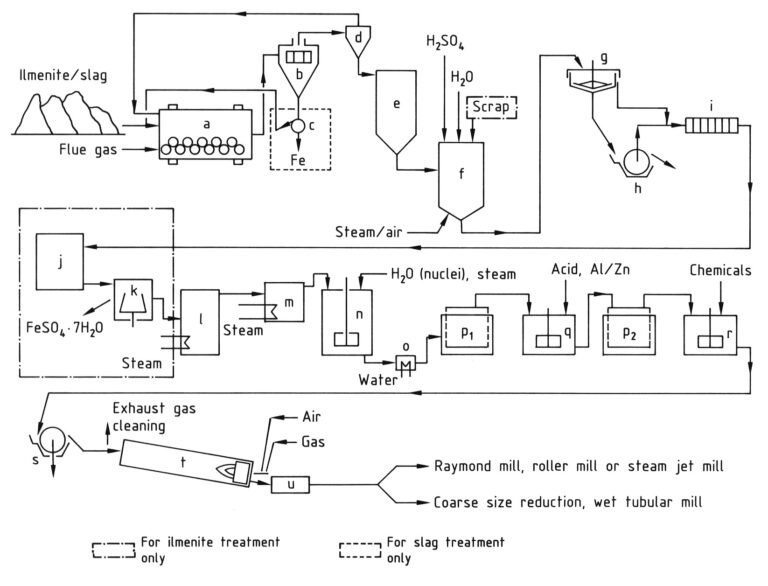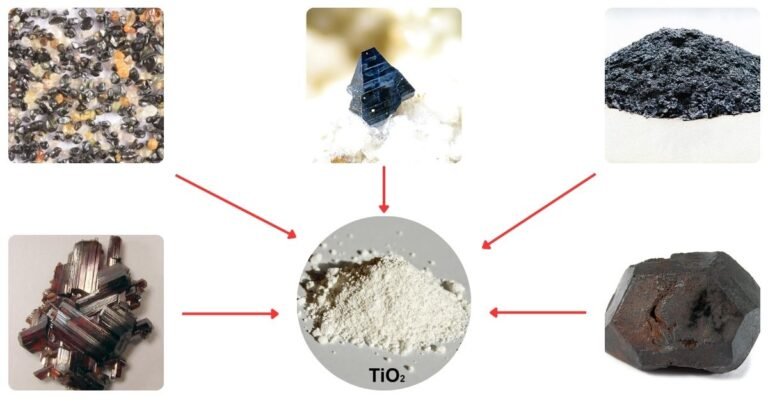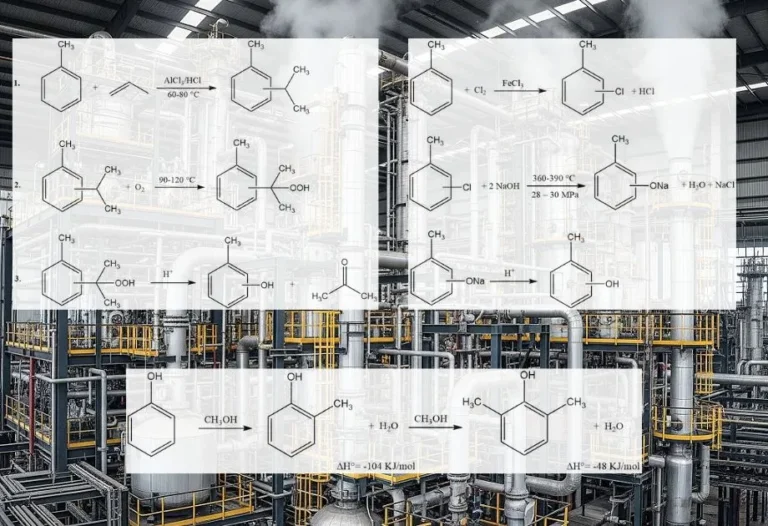
Table of Contents
1. introduction
Biotechnology is a broad and interdisciplinary field that involves the use of living organisms, biological systems, and their components to develop or improve products, processes, and technologies.
It encompasses a range of scientific disciplines, including molecular biology, genetics, biochemistry, and microbiology, among others. Biotechnology is used in a variety of fields, including healthcare, agriculture, food production, environmental management, and manufacturing.
The origins of industrial biotechnology can be traced back to the fermentation processes used to produce alcoholic beverages, bread, and cheese.
The first major milestone in industrial biotechnology occurred in the early 20th century with the development of the first microbial-based industrial process for producing citric acid.
The process was developed by James Currie and Pierre Joseph Weisner, and it became the foundation for industrial fermentation processes.
In the mid-20th century, the development of antibiotics revolutionized medicine and transformed the field of industrial biotechnology. Alexander Fleming’s discovery of penicillin in 1928 was followed by a series of developments that led to the mass production of antibiotics, which were used to treat infectious diseases.
In the latter half of the 20th century, the use of recombinant DNA technology became a defining moment in industrial biotechnology. The ability to manipulate DNA sequences and produce genetically modified organisms opened up new possibilities for industrial processes.
In 1982, the first recombinant protein, insulin, was produced by Genentech, marking a new era in industrial biotechnology.
Since then, significant developments have taken place in industrial biotechnology, including the production of biofuels, bioplastics, and enzymes using microbial fermentation processes.
Today, industrial biotechnology has become a key player in creating sustainable and efficient manufacturing processes.
2. Biotechnology in the Manufacturing Industry
2.1. Biofuels and alternative energy sources
Biofuels are fuels made from biological materials, such as plant matter or waste products. There are two main types of biofuels: ethanol, which is made from the fermentation of sugars, and biodiesel, which is made from the conversion of plant oils or animal fats. Biotechnology is involved in both the production and optimization of biofuels.
One of the key areas where biotechnology is being applied is in the development of new feedstocks for biofuels. Microorganisms such as algae, bacteria, and fungi are being engineered to produce oils and other compounds that can be converted into biofuels.
These microorganisms can be grown on a variety of substrates, including waste products, making them a potentially sustainable and cost-effective source of biofuels.
Another area where biotechnology is being applied is in the optimization of biofuel production processes. Bioreactors, which are devices that support the growth of microorganisms, are being developed to produce biofuels more efficiently.
The use of genetic engineering and synthetic biology is also helping to improve the yield and quality of biofuels.
biotechnology is also being applied in the development of other alternative energy sources. For example, biogas, which is produced through the anaerobic digestion of organic matter, can be used as a fuel source for electricity generation.
Microbial fuel cells, which use bacteria to generate electricity from organic matter, are also being developed as an alternative energy source.
2.2. Enzymes in industrial processes
Enzymes are one of the most valuable tools in biotechnology, and they play a vital role in a wide range of industrial processes. They are highly specific biological molecules that catalyze chemical reactions, and their use in industrial processes has revolutionized many industries.
Enzymes are used in various industrial processes, such as food and beverage production, pharmaceuticals, and bioremediation. One of the significant benefits of using enzymes is their ability to work under mild conditions, such as low temperatures and neutral pH, which can reduce the cost and environmental impact of the process.
In food and beverage production, enzymes are used for a variety of purposes, such as the production of cheese, beer, and bread.
For example, enzymes are used in the production of cheese to break down the milk proteins and create the characteristic texture and flavor of the cheese.
In beer production, enzymes are used to break down the starch in the grains and convert them into fermentable sugars.
In the pharmaceutical industry, enzymes are used in the production of drugs. They are used to catalyze reactions in the synthesis of drugs, such as the production of the antiviral drug acyclovir.
Enzymes are used to catalyze the reaction that converts the precursor molecule into acyclovir, which is then purified and used in the production of the drug.
2.3. Bioplastics and biomaterials
Bioplastics are plastics made from renewable biomass sources, such as corn starch, vegetable fats and oils, and pea starch. They can be used in a variety of applications, such as packaging materials, disposable cutlery, and even car parts.
Bioplastics have become increasingly popular due to their eco-friendliness, as they can biodegrade under certain conditions, reducing the impact on the environment.
Biomaterials are materials derived from living organisms, such as plant fibers, animal tissues, and microorganisms. They have numerous applications in various industries, including biomedical, automotive, and construction. Biomaterials can be used as scaffolds for tissue engineering, wound dressings, and even as replacement organs.
The production of bioplastics and biomaterials involves a variety of biotechnological processes, such as fermentation, enzyme catalysis, and genetic engineering. Fermentation is used to produce bioplastics, where microorganisms are used to convert biomass into polymers.
Enzyme catalysis is used to produce biomaterials, where enzymes are used to modify the properties of the materials. Genetic engineering is used to modify the genetic makeup of organisms to produce specific biomaterials with desirable properties.
The use of bioplastics and biomaterials offers numerous benefits, including reducing the dependence on fossil fuels, reducing waste and pollution, and promoting sustainability. They also have various applications in different industries, such as packaging, agriculture, and healthcare.
2.4. Biotechnology in Agriculture and Food Production
Biotechnology in agriculture involves the use of genetic engineering, tissue culture, and marker-assisted breeding to produce crops with desirable traits, such as higher yields, resistance to pests and diseases, and improved nutritional value.
Genetic engineering involves the modification of an organism’s genetic material, usually by inserting a gene from another organism, to produce the desired trait.
Tissue culture involves the production of plants from a small tissue sample, allowing for the mass production of plants with desirable traits.
Marker-assisted breeding involves the identification of desirable traits through genetic markers and breeding plants with those traits.
2.4.1. Genetically modified crops
Genetically modified crops are produced using a variety of techniques, such as gene editing, recombinant DNA technology, and transgenic technology. Gene editing involves the direct manipulation of an organism’s genetic material to produce the desired trait.
Recombinant DNA technology involves the insertion of a foreign gene into an organism’s DNA to produce the desired trait. Transgenic technology involves the insertion of a gene from another organism into a plant’s DNA to produce the desired trait.
The benefits of genetically modified crops include increased crop yields, reduced use of pesticides and herbicides, and improved nutritional value. Genetically modified crops are also more resistant to pests and diseases, reducing the need for harmful chemicals that can harm the environment and human health.
They can also be engineered to tolerate environmental stress, such as drought and heat, allowing them to grow in harsher conditions.
2.4.2. Microbial fermentation for food and beverage production
Microbial fermentation is a process in which microorganisms, such as bacteria, yeast, and fungi, break down carbohydrates and other organic compounds to produce energy and byproducts.
These byproducts, such as lactic acid, ethanol, and carbon dioxide, are used in the production of various food and beverage products. Microbial fermentation can also be used to produce enzymes and other food ingredients.
The types of microorganisms used in microbial fermentation depend on the specific product being produced. For example, lactic acid bacteria are used in the production of yogurt, cheese, and sauerkraut, while yeast is used in the production of beer, wine, and bread. Fungi are used in the production of certain cheeses, such as blue cheese and Camembert.
Microbial fermentation offers numerous benefits in food and beverage production. It can improve the texture, flavor, and nutritional value of products, as well as extend their shelf life. It can also reduce the need for additives and preservatives, making products more natural and healthier.
microbial fermentation is also being used to produce new and innovative food and beverage products. For example, microbial fermentation is being used to produce meat substitutes, such as plant-based burgers and chicken. It is also being used to produce sustainable food sources, such as insect-based protein and algae-based food products.
2.5. Biotechnology in Healthcare and Pharmaceuticals
Biotechnology in healthcare and pharmaceuticals involves the use of biological systems, such as cells and microorganisms, to develop new treatments and therapies for diseases. Techniques used in biotechnology include genetic engineering, recombinant DNA technology, and protein engineering
2.5.1. Biopharmaceuticals and drug development
One of the most well-known biopharmaceuticals is insulin, which is used to treat diabetes. Insulin was first isolated and purified from the pancreas of dogs in 1922 by Frederick Banting and Charles Best. Since then, insulin has been produced using recombinant DNA technology, which involves inserting the gene for human insulin into bacteria or yeast cells.
This process allows for large-scale production of insulin that is identical to the human form.
Biopharmaceuticals have several advantages over traditional chemical drugs. They are highly specific and can target specific cells or tissues, which can lead to better treatment outcomes and fewer side effects. Biopharmaceuticals can also be produced in large quantities and have a lower risk of contamination compared to traditional chemical drugs.
Biopharmaceuticals have been used to develop treatments for a range of diseases, including cancer, autoimmune disorders, and infectious diseases. Monoclonal antibodies, which are a type of biopharmaceutical, have been used to develop drugs that can target cancer cells specifically, leading to more effective treatments with fewer side effects.
The development of biopharmaceuticals involves several stages, including discovery, preclinical testing, clinical trials, and regulatory approval. The process can be lengthy and expensive, but the potential benefits are significant.
In recent years, advances in biotechnology have led to the development of new techniques for producing biopharmaceuticals, such as gene editing and CRISPR-Cas9 technology. These techniques have the potential to improve the safety and efficacy of biopharmaceuticals and to lead to the development of new treatments for diseases.
2.5.2. Gene therapy and genetic engineering
Gene therapy and genetic engineering are two closely related fields that have revolutionized modern medicine and biotechnology. Both fields involve the manipulation of genes and genetic material to treat and prevent disease, as well as to develop new products and technologies.
Gene therapy involves the delivery of genetic material into a patient’s cells to treat or prevent disease. This can be done using a variety of methods, including viral vectors, liposomes, and naked DNA. The goal of gene therapy is to replace, repair, or delete faulty genes that cause disease or to introduce new genes that can provide therapeutic benefits.
There are several types of gene therapy, including somatic gene therapy, which targets non-reproductive cells in the body, and germline gene therapy, which targets reproductive cells and can potentially pass on genetic modifications to future generations. Germline gene therapy is controversial and currently not widely practiced due to ethical and safety concerns.
3. Environmental Biotechnology
Environmental biotechnology is a field of biotechnology that focuses on the application of biological processes to environmental problems. It involves the use of living organisms or their products to remediate polluted environments, produce renewable energy, and create sustainable products.
Environmental biotechnology has gained increasing attention in recent years as a result of growing concerns over environmental degradation and the need to find sustainable solutions to pressing environmental problems. It encompasses a wide range of techniques and approaches, including bioremediation, biofiltration, phytoremediation, and biomining.
One important application of environmental biotechnology is bioremediation, which is the use of microorganisms to clean up contaminated soil, water, and air.
Microorganisms, such as bacteria and fungi, can break down pollutants and transform them into harmless substances. Bioremediation has been successfully used to clean up oil spills, industrial waste, and other types of pollution.
Another important application of environmental biotechnology is the production of renewable energy. Microorganisms can be used to generate biogas from organic waste, such as food waste and animal manure, through a process called anaerobic digestion. Biogas can be used as a renewable energy source for electricity generation and heating.
References
- Biotechnology: https://www.ncbi.nlm.nih.gov/books/NBK531462/
- Historical development and milestones in industrial biotechnology: https://www.ncbi.nlm.nih.gov/pmc/articles/PMC4873197/
- Biotechnology in biofuels and alternative energy sources: https://www.ncbi.nlm.nih.gov/pmc/articles/PMC5638854/
- Enzymes in industrial processes: https://www.ncbi.nlm.nih.gov/pmc/articles/PMC5405603/
- Bioplastics and biomaterials: https://www.ncbi.nlm.nih.gov/pmc/articles/PMC5792185/
- Biotechnology in agriculture and food production: https://www.ncbi.nlm.nih.gov/pmc/articles/PMC4607147/
- Genetically modified crops: https://www.ncbi.nlm.nih.gov/books/NBK234836/
- Microbial fermentation for food and beverage production: https://www.ncbi.nlm.nih.gov/pmc/articles/PMC4960832/
- Biotechnology in healthcare and pharmaceuticals: https://www.ncbi.nlm.nih.gov/pmc/articles/PMC5404186/
- Biopharmaceuticals and drug development: https://www.ncbi.nlm.nih.gov/pmc/articles/PMC5044755/
- Gene therapy and genetic engineering: https://www.ncbi.nlm.nih.gov/books/NBK215014/
- Environmental biotechnology: https://www.ncbi.nlm.nih.gov/pmc/articles/PMC6722514/




